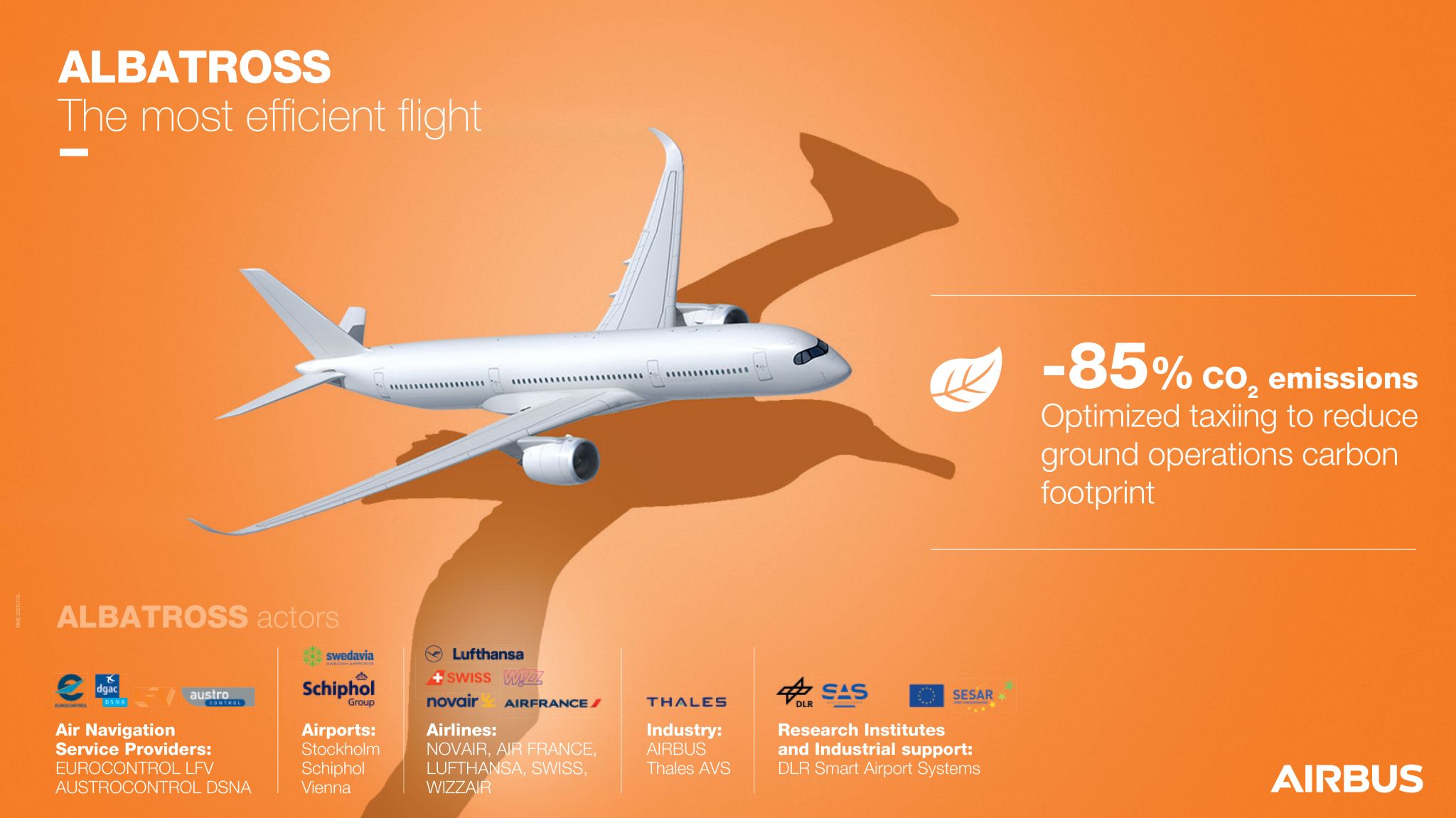Measuring performance is a critical part of SESAR research and innovation, particularly for large-scale demonstrations like ALBATROSS, a project which aims to confirm the energy-saving benefits of a combination of SESAR Solutions. In this article, Dr. Zainal Abidin, researcher from AIRBUS, explains what the project is doing to ensure that the data collected during the 1,000 live flights planned for this year are reliable and comparatively measurable.
Launched in February 2021, ALBATROSS is conducting as series of gate-to-gate live demonstration flights across Europe with a view to demonstrating the feasibility of implementing more energy-efficient flights, by combining several technical and operational innovations, known as SESAR Solutions.
ALBATROSS follows a holistic approach by covering all flight phases, directly involving all relevant stakeholder groups (such as airlines, ANSPs, network managers, airports and industry) and addressing both operational and technological aspects of aviation and air traffic management (ATM). Many solutions will be put into practice during the flight demonstrations, from new precision approach procedures to continuous climb and descent, a more dynamic management of necessary airspace constraints, sustainable taxiing and sustainable aviation fuel (SAF) usage.
How is ALBATROSS measuring performance?
Demonstrating the benefits relies on comparable, reliable and easily interpretable results at the end of the day. To this end, the ALBATROSS partners aims to ensure that assessment methods and key performance indicators (KPIs) are defined and correctly applied in order to evaluate performance of the planned flight trials. The consortium is using recognised best practices to numerically evaluate the environmental efficiency and climate impact of the solutions that are being trialed. They consist essentially on three types of methodologies: “paired” gate-to-gate trajectories analysis (i.e. calculating deltas of the solution flight parametres matched over the trajectories related to reference flight parameters), statistical methods (when clustered results are compared with descriptive statistical tool) and AI methods (when machine learning algorithms are used to evaluate and predict of a certain operational solution is effective).
How can the results of the different exercises be made comparable?
In order to compare the different exercises, we have come up with a list of more than 25 KPIs to evaluate each flight trajectory – for either solution or reference flights. These KPIs are expressed as industry standard metrics related to route performance, fuel efficiency (i.e. kilogrammes of fuel burn or CO2 produced in each different phases of flight) or environmental impact (i.e. approach noise contour area at selected airports). Each flight exercise has its own set associated KPIs that can be compared to the baseline, i.e. operations where the SESAR Solutions have not been implemented, on single flight or on aggregated basis (statistical solutions) analysis.
What are the areas of interest for the evaluations?
The main objective of ALBATROSS is to evaluate the CO2 reduction related to the selected SESAR solutions, when compared with flights without these solutions. However, ad-hoc evaluations may be adopted related to airport noise and non-CO2 emissions reductions, in addition to airspace capacity improvements and pilot/ATC controller workload. Conclusions can then be extrapolated through similar scenarios at European level (i.e. European Civil Aviation Conference (ECAC))
The first results from the demonstration are expected to be available later this year.
The ALBATROSS partners are Airbus, Air France, Austro Control, DLR, DSNA, Eurocontrol, LFV, Lufthansa, Novair, Schiphol, Smart Airport Systems, SWEDAVIA, SWISS, Thales AVS France and WIZZ AIR UK.
This project has received funding from the SESAR 3 Joint Undertaking under the European Union's Horizon 2020 research and innovation programme under grant agreement No 101017678.


